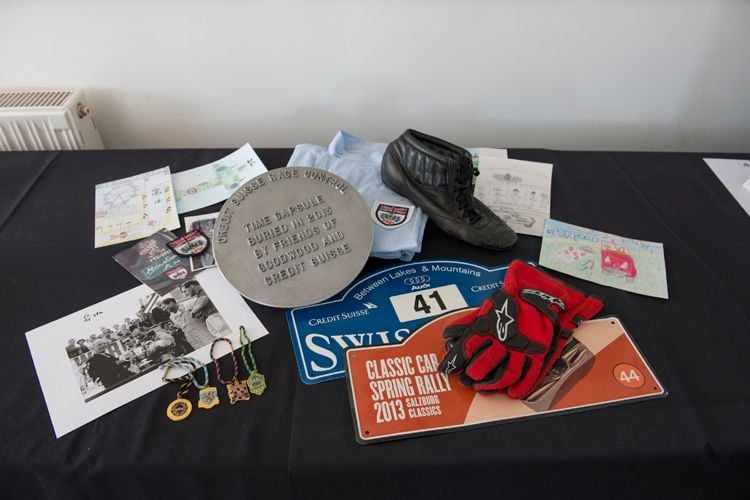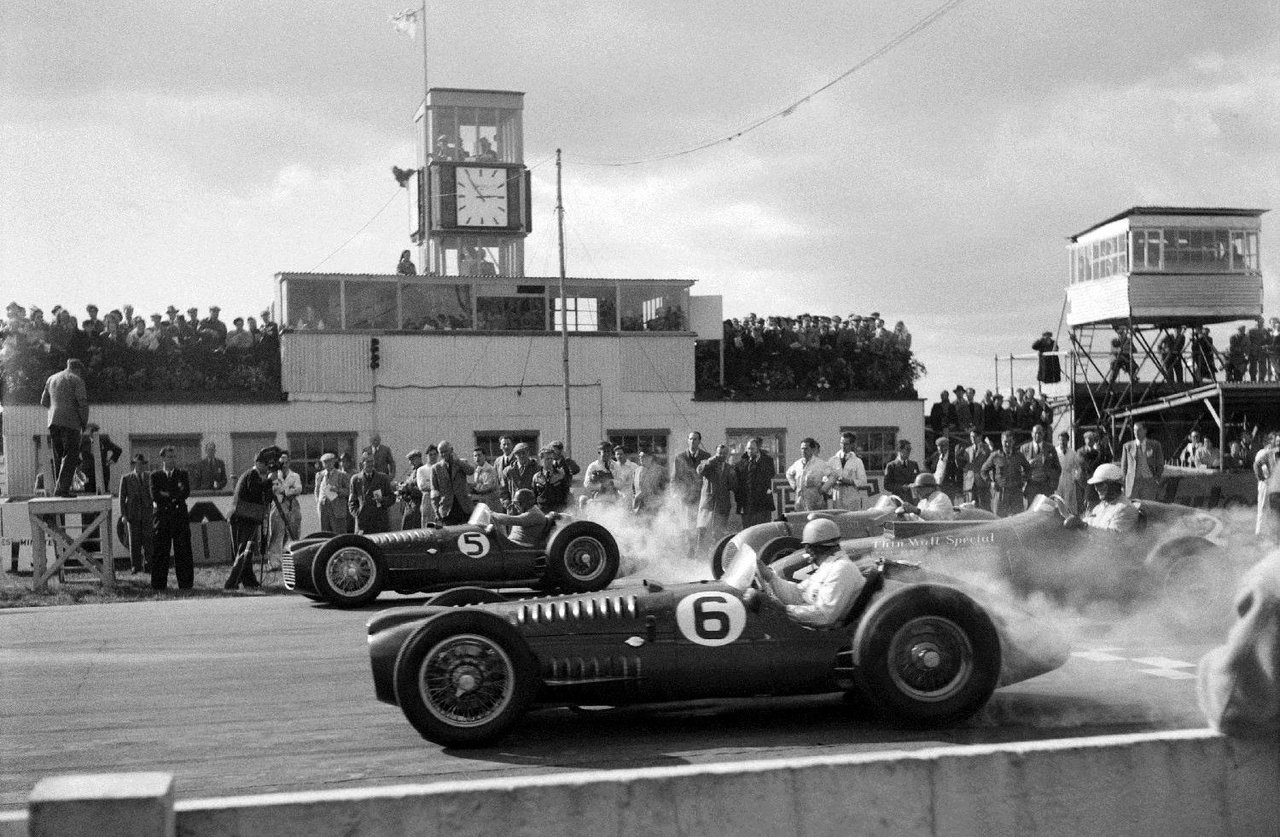Promotional feature
After almost a decade as a committed partner of the world's leading classic car events and the organiser of its own rallies, Credit Suisse is proud to support the restoration of Goodwood Motor Circuit's Race Control building.
During World War II, a large area of farmland on the south-western edge of the Goodwood Estate was developed as the Royal Air Force Westhampnett fighter base, which became a centre of historic action during the 1940 Battle of Britain.
Post-War, RAF Westhampnett was closed to operations and returned to the Goodwood Estate. The late Freddie March then led the way in persuading British Government ministries to permit disused aerodrome perimeter tracks to be adopted for racing, which led to the opening of the Goodwood Motor Circuit in 1948.
Race Control – the Early Days

To run a race meeting effectively required a Race Control centre. Initially, Race Control operated from a double-decker bus and later from a temporary scaffolding construction. The historic Race Control building - which is so proudly preserved today - is essentially a single-storey wartime Ministry-style structure in red brick, possibly built from a surplus War Department building kit very early in the motor circuit's history. Upon its flat roof, another structure was added which would be continually modified during the circuit's major-league active life, until long-lasting closure in 1966.
Race Control acted as a central office with a view of the race circuit's starting grid and pits area, from which the presiding Clerk of the Course, his Royal Automobile Club presiding stewards and other officials could control the running of their race meeting.
The Hub of Goodwood

Goodwood's Race Control building became the hub of circuit activities from 1948-66, and with the launch of the modern series of Goodwood Revival Meetings in 1998, all its old significance has returned. Not only are the rules of racing observed and administered from it, the all-important timekeepers with their millisecond recording equipment and print-out facilities operate from within its historic fabric.
All the great constructors and trophy-winning superstar drivers have graced Race Control in their dealings with the Goodwood organisers, or for prize giving ceremonies on its podium. These include five-times World Champion Juan Manuel Fangio, first British World Champion Mike Hawthorn, plus other renowned names including Sir Stirling Moss, who won his very first serious circuit race here in the inaugural meeting of 1948.
Much of Great Britain's motor racing history has been written in the Race Control building, amidst much excitement, a ton of tension and occasionally, of course, deep concern and (thankfully rare) grief. Today, the newly-restored Race Control building is entering the next chapter in its history. Under Credit Suisse's leadership, the building will play host to a wide range of activities for VIPs and media including, at this year's Revival, the building's official re-opening and the 3rd Historic Racing Forum. In a nod to tradition, prizegiving will continue to take place from Credit Suisse Race Control.
Any motor racing circuit has at its heart its Race Control centre, and thanks to Credit Suisse's support, that at Goodwood survives today as one of the world's longest serving, best preserved, and most charismatic of them all.
Text & Photos: Credit Suisse /The Klemantaski Collection








